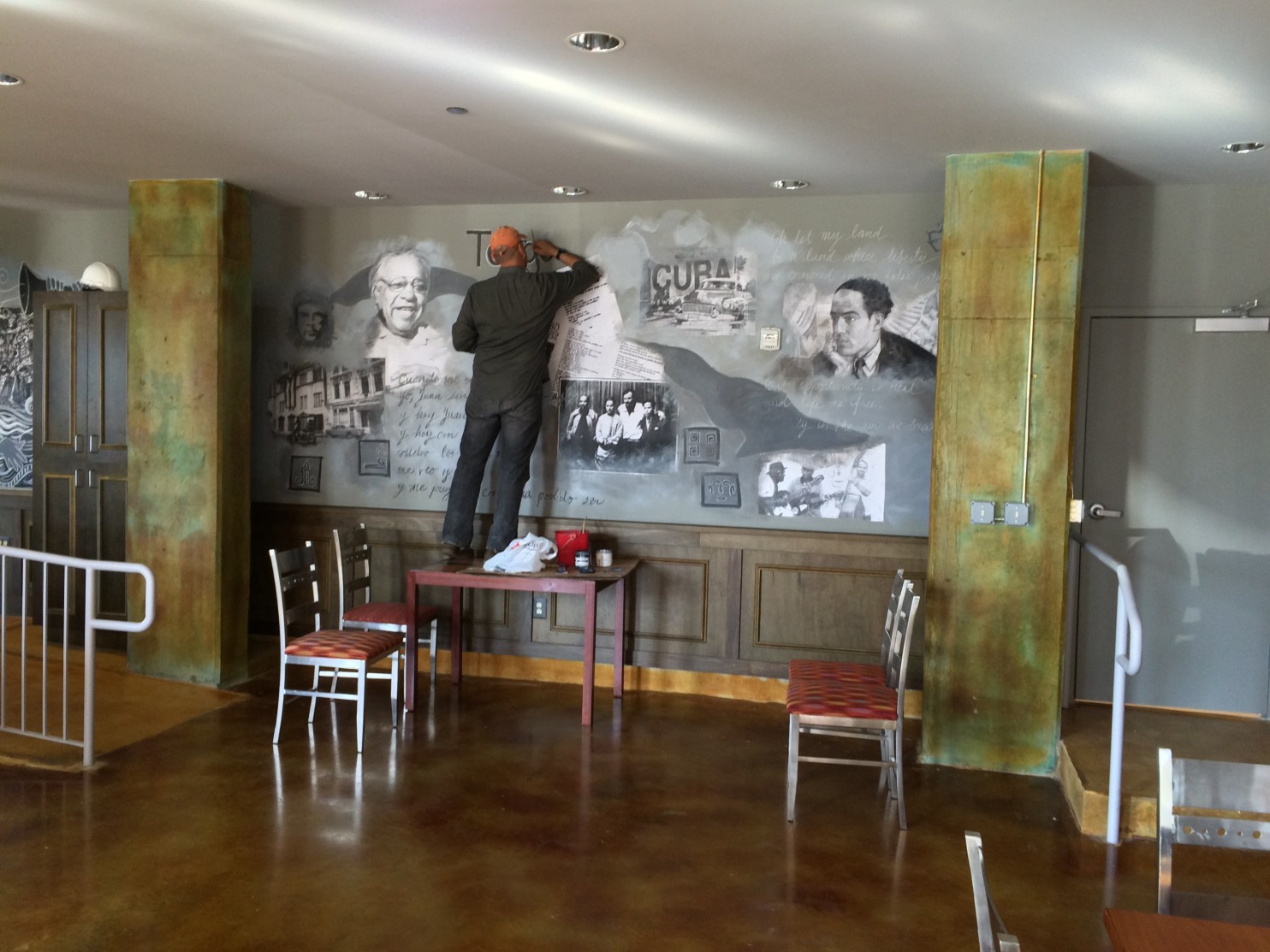
Cuba, busboys and poets, Takoma Park. Any questions?
We found Andy Shallal, owner of Busboys and Poets, daubing paint on the wall of the forthcoming addition to his progressive restaurant empire Wednesday morning. He used a flattened cardboard box as a palette, and looked slightly deadline-haunted. In other rooms, workers were in the final stages of pulling the restaurant together. An inspection was scheduled for later in the day.
“I get halfway into these murals and I think, ‘What have I gotten myself into!’” Shallal said cheerfully. “We are sold out like crazy for the opening event Saturday,” a Valentine’s Day party with jazz and poetry. “Sometimes it’s good to have deadlines.”
This new Busboys and Poets in Takoma D.C. is the sixth link in the local restaurant chain since 2005, with the seventh already being forged in Anacostia. Shallal’s formula is familiar but never dull — eclectic cuisine served in politics-and-poetry-friendly environments tucked into swank new condo or apartment developments.
The big surprise, every time, is the original mural that dominates the performance space/secondary dining room of each location.
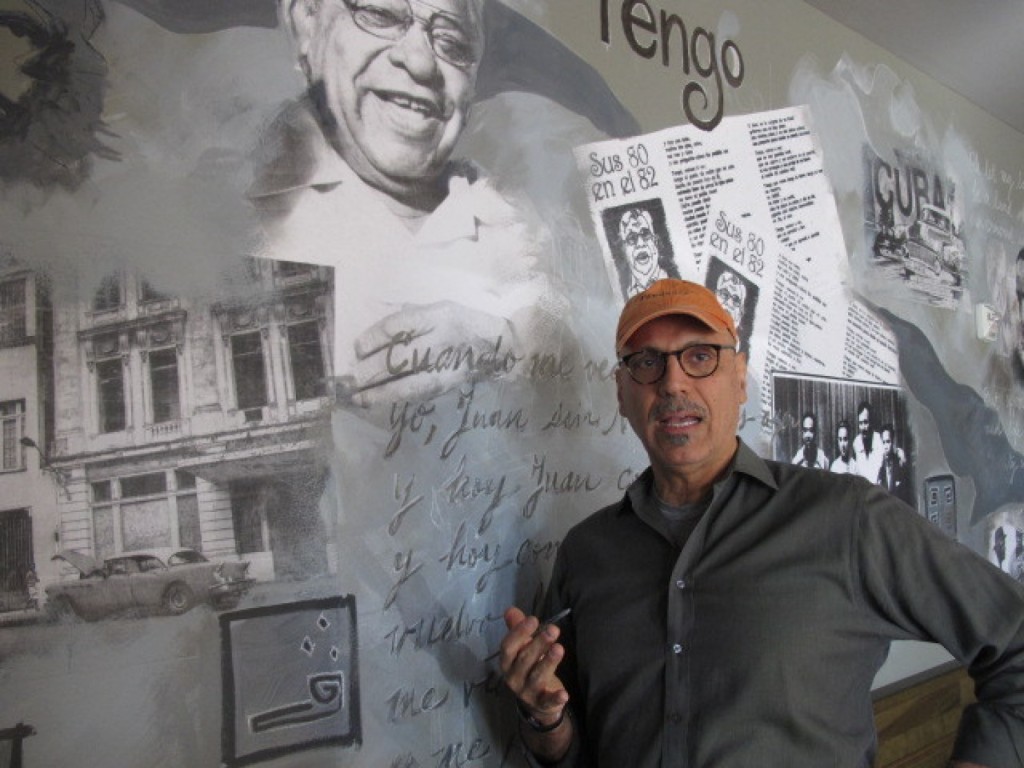
Shallal usually conceives and executes the murals himself, in his distinctive collage style. The Langston Room of the flagship 14th and V Streets NW Busboys shows off his “Peace and Struggle” salute to activist heroes through the ages, topped by verses from Langston Hughes (“Let America be America again….). Hughes’s life and work are the founding inspirations for Shallal’s enterprise.
The other restaurants feature mural tributes to Paul Robeson, Howard Zinn, Countee Cullen and Pearl Bailey (that last one not created by Shallal). For the Anacostia location slated to open in about a year, Shallal is planning a large piece about Frederick Douglass.
But what to put in Takoma?
We studied the unfinished mural and saw that the collage included a stylized map of –
“Cuba,” said Shallal.
And a portrait of –
“Nicolás Guillén.”
Guillén (1902-1989) was an Afro-Cuban poet and journalist whose advocacy for racial and social justice got him exiled in the 1950s. He had joined the Cuban Communist Party in 1937, when Fidel Castro was but a lad of 11 years old. After Castro’s revolution in 1959, Guillén was welcomed home.
Soon after his return, he wrote the poem “Tengo,” or “I Have.” Shallal was now brushing lines from “Tengo” onto the wall, in Spanish. The poem is about the joy of an anonymous black man, peasant, worker, patriot feeling at last that his country is his own.
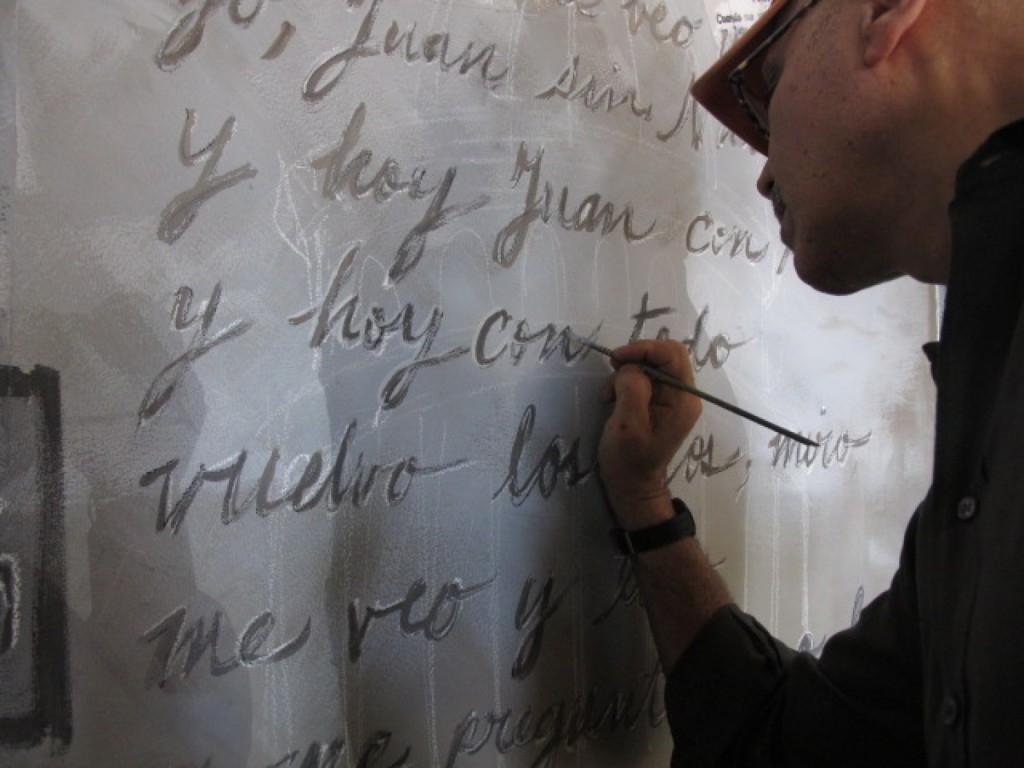
“It brings tears to your eyes,” Shallal said.
A Cuban theme for the new mural — how perfect. Shallal’s timing and instinct for the main chance are nearly impeccable (he lost a Democraticprimary race for the nomination for D.C. mayor last year). Cuba crackles across the synapses of American culture just now. The recent opening of diplomatic talks, including the exchange of prisoners, is just the governments’ way of catching up with the peoples’ rising curiosity and willingness to engage with each other. There’s a boomlet of business planning, edu-tours, artistic exchanges and individual visitors heading in both directions.
The Takoma neighborhood has other resonances. As it happens, a short walk from the restaurant, across the line in Takoma Park, Md., is a house where a sympathetic Salvadoran couple hosted parties for supporters of the Cuban 5 prisoners, until December, when the last of the five were released by U.S. authorities.
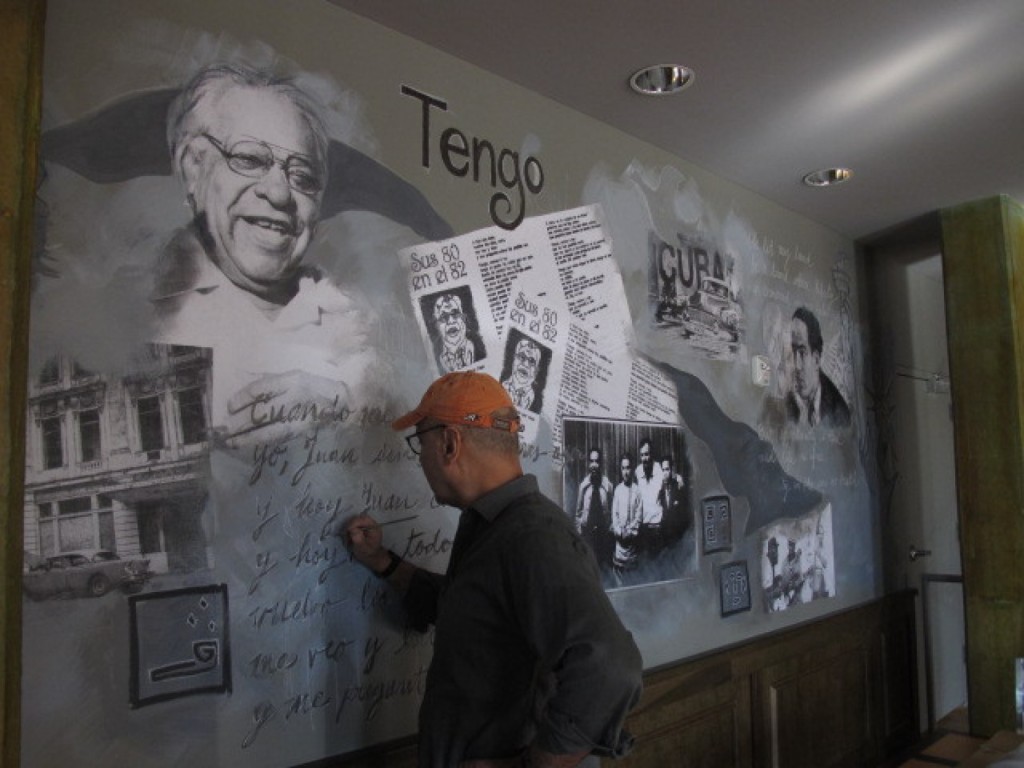
Shallal says he already had been contemplating a Latino for the Takoma mural – Guillén, or perhaps Frida Kahlo. The break in Cuba relations was an impetus to go with Guillén.
However, for Shallal, the most important factor in choosing Guillén was the Cuban’s friendship with Hughes. They met in 1930 when Hughes traveled to Cuba. It was an important meeting for both men. Hughes inspired Guillén to write poems in an Afro-Cuban voice, and to draw on the rhythms of Cuban son music, much as Hughes refracted American blues in his poetry. Shallal painted Hughes into the mural.
The poets met again, in Madrid, in 1937, at a gathering of writers. A photo was made at the time showing Hughes, Soviet journalist Mikhail Koltzov, Ernest Hemingway and Guillén. Hemingway has his left arm draped affectionately over Guillén’s shoulders. Shallal incorporated that image into his mural as well.
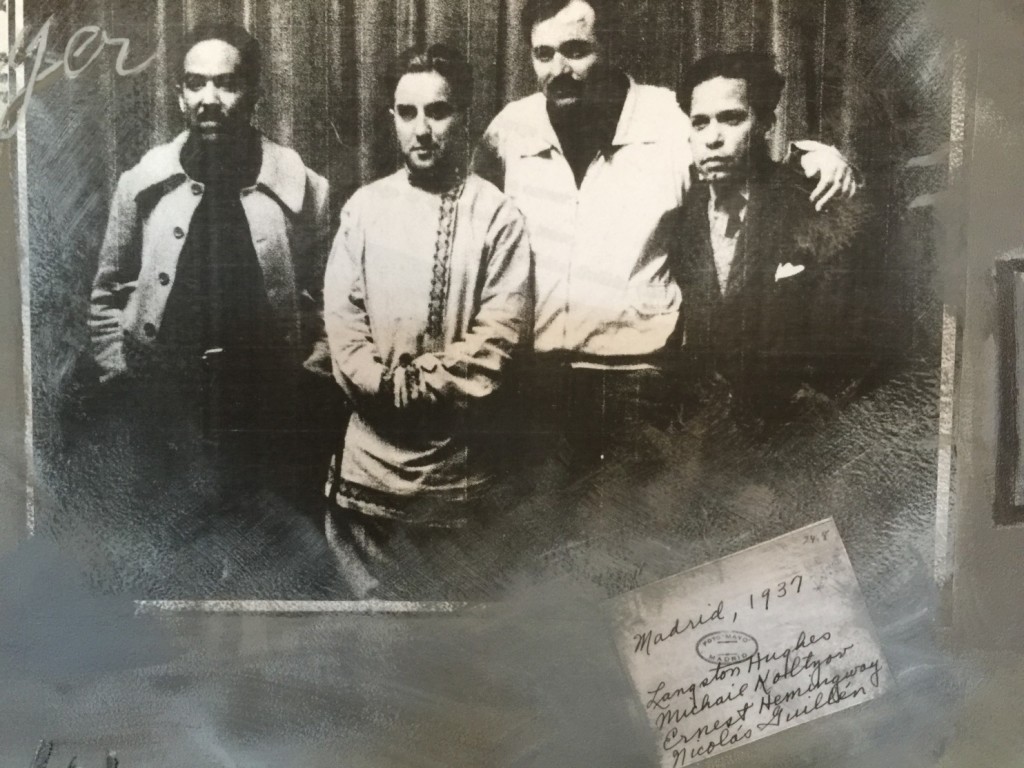
“Politics change when cultural exchanges start to take shape,” said Shallal, who is planning a “Cuba week” of films, discussions, music and partying at his restaurants Feb. 28 to March 7. “So we thought, let’s move ahead with the cultural exchange.”
(From: The Washigton Post)

